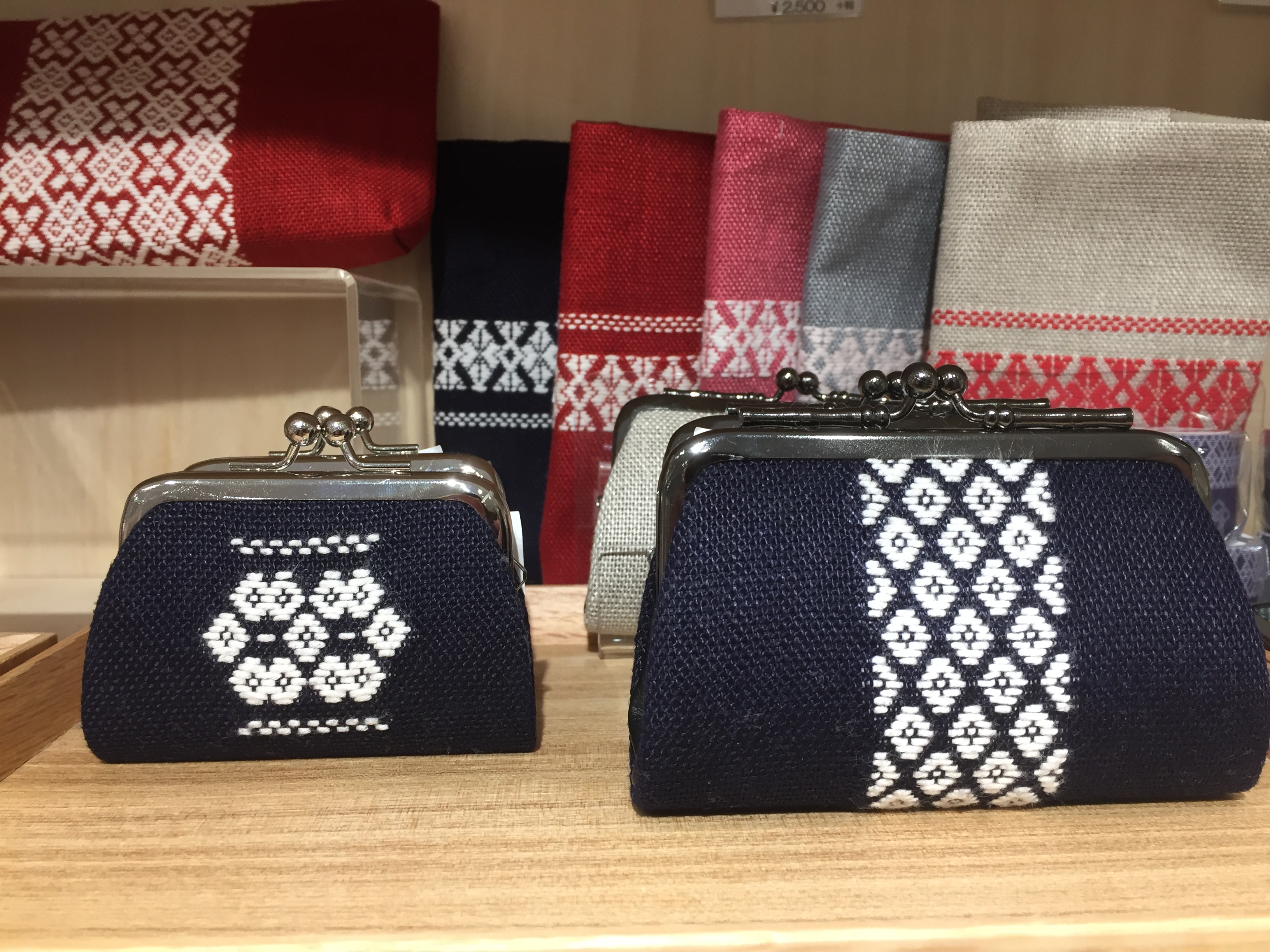Kogin-zashi on:
[Wikipedia]
[Google]
[Amazon]
 is one of the techniques of , or traditional
is one of the techniques of , or traditional
 During the Edo period, peasants were not permitted to wear cotton cloth in the Tsugaru region. Peasants initially attempted to stay warm by wearing multiple layers of
During the Edo period, peasants were not permitted to wear cotton cloth in the Tsugaru region. Peasants initially attempted to stay warm by wearing multiple layers of
 is one of the techniques of , or traditional
is one of the techniques of , or traditional Japan
Japan ( ja, 日本, or , and formally , ''Nihonkoku'') is an island country in East Asia. It is situated in the northwest Pacific Ocean, and is bordered on the west by the Sea of Japan, while extending from the Sea of Okhotsk in the north ...
ese decorative reinforcement stitching, that originated in the part of present-day Aomori Prefecture controlled by the Tsugaru clan during the Edo period (1603-1867). It is also referred to as .
is generally constructed of white cotton embroidery in diamond patterns on indigo-dyed
Dyeing is the application of dyes or pigments on textile materials such as fibers, yarns, and fabrics with the goal of achieving color with desired color fastness. Dyeing is normally done in a special solution containing dyes and particular ch ...
fabrics such as cotton, linen
Linen () is a textile made from the fibers of the flax plant.
Linen is very strong, absorbent, and dries faster than cotton. Because of these properties, linen is comfortable to wear in hot weather and is valued for use in garments. It also ...
and hemp
Hemp, or industrial hemp, is a botanical class of ''Cannabis sativa'' cultivars grown specifically for industrial or medicinal use. It can be used to make a wide range of products. Along with bamboo, hemp is among the fastest growing plants o ...
. During the Edo period, peasants were not permitted to wear cotton cloth in the Tsugaru region, so cotton thread was added to linen cloth with the aim of bypassing these regulations and making clothes warmer and more protective during the harsh winter weather, as well as strengthening the cloth.
History
 During the Edo period, peasants were not permitted to wear cotton cloth in the Tsugaru region. Peasants initially attempted to stay warm by wearing multiple layers of
During the Edo period, peasants were not permitted to wear cotton cloth in the Tsugaru region. Peasants initially attempted to stay warm by wearing multiple layers of linen
Linen () is a textile made from the fibers of the flax plant.
Linen is very strong, absorbent, and dries faster than cotton. Because of these properties, linen is comfortable to wear in hot weather and is valued for use in garments. It also ...
, but the fabric frayed easily. As a solution, cotton thread was added as embroidery to linen cloth with the aim of bypassing the regulations and making clothes more protective during the harsh winter weather, as well as strengthening the cloth.
Later, during the Meiji period (1868-1912), the class system was abolished. This enabled the use of cotton in clothing for everyone in the former holdings of the Tsugaru, and embroidering dyed indigo cloth with white cotton thread became more common. As the access to materials increased, competition to design the most beautiful patterns rose, with an estimate of over 300 different patterns being created.
In the 20th century, the craft of was streamlined, establishing the three general types that are seen today: , , and . The Hirosaki
is a city located in western Aomori Prefecture, Japan. On 1 April 2020, the city had an estimated population of 168,739 in 71,716 households, and a population density of . The total area of the city is .
Hirosaki developed as a castle town for ...
Koginzashi Institute has sought to preserve and promote since the 1960s.
In 1996, was given the status of a traditional craft item of Aomori Prefecture. In the present-day, elementary school
A primary school (in Ireland, the United Kingdom, Australia, Trinidad and Tobago, Jamaica, and South Africa), junior school (in Australia), elementary school or grade school (in North America and the Philippines) is a school for primary ed ...
students in Aomori Prefecture learn how to hand-stitch the pattern.
Variations
The pattern originated in the area west of the city of
Hirosaki
is a city located in western Aomori Prefecture, Japan. On 1 April 2020, the city had an estimated population of 168,739 in 71,716 households, and a population density of . The total area of the city is .
Hirosaki developed as a castle town for ...
. Stripes placed on the shoulders of clothing are arranged in a horizontal pattern. This was done to increase their strength while carrying goods over the shoulder.
The pattern originated in the area east of the city of Hirosaki, in today's Minamitsugaru District. It lacks the stripes that are seen in the other two varieties and uses mostly diamond shapes.
The pattern originated in the area north of the city of Hirosaki. The area was not as well-off as other parts of the Tsugaru region, suffering from poor harvests caused by the earlier onset of the harsh winter. As a result, patterns were smaller than seen in other areas due to the lack of material. Horizontal stripes are used, though not as heavily as seen in patterns.
See also
*Katsushika Hokusai
, known simply as Hokusai, was a Japanese ukiyo-e artist of the Edo period, active as a painter and printmaker. He is best known for the woodblock print series '' Thirty-Six Views of Mount Fuji'', which includes the iconic print ''The Great W ...
References
External links
* * {{Authority control Japanese folk art Embroidery stitches Embroidery Quilting Culture in Aomori Prefecture History of Aomori Prefecture Japanese stitching techniques